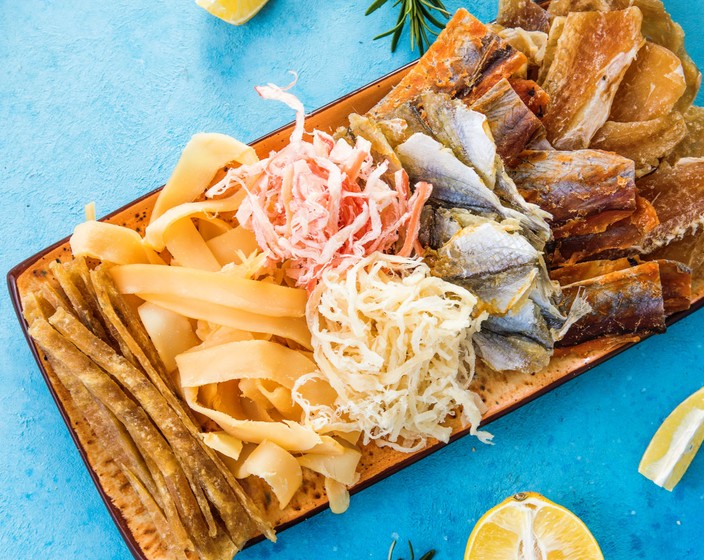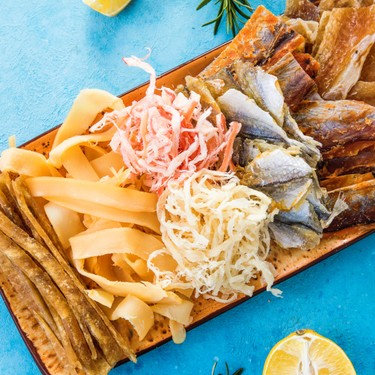What Is Umami Flavor: 10 Umami Rich Ingredients to Cook With




Umami is the fifth taste. There’s sweet, sour, salty, bitter, and there’s umami.
The term itself was coined by a Japanese scientist and has only been officially recognized as the fifth (and the most magical) flavor in the 1980s. Roughly translated as “pleasantly savory,” it is hard to explain what umami tastes like.
What on earth does this fifth taste like? Umami-rich food tastes savory, but it is hard to describe what that actually means. It has a rich, salty, layered taste leaving you wanting more.
Can you use words to describe what “salty” tastes like? Exactly! Salty tastes, well, salty… and umami tastes fantastic. It makes your savory dishes moreish and adds ephemeral complexity to all the flavors. Amazing.
What the taste buds on your tongue sense when umami hits them is glutamate. Glutamate is an amino acid produced in the body and occurs naturally in many foods. Its molecules are found in high-protein foods like meats, mushrooms, cheese, tomato sauce, and some other staple ingredients we will list in this article. As it turned out, after numerous studies, umami tastes fantastic.
Have you heard of MSG (monosodium glutamate)? It turns out MSG is not all that bad for you unless you are eating it with a spoon.
Don’t worry; MSG is just one form of glutamate, not interchangeable in taste or function. MSG is actually what we call a “flavor enhancer,” and what it does is amplify the umami-ness of food and can be used to boost flavors in savory sauces, salad dressings, and soups.
Unfortunately, there’s no specialty store where you can go and buy some umami for your Sunday roast. So where do I get this umami stuff, you wonder.
You achieve the magical fifth flavor by using the so-called ‘umami agents’ in your cooking. Umami agents are foods and ingredients naturally rich in umami. You are probably using them in your cooking already.
Here, we have listed some great ways to add umami flavor to your dishes.
Inexperienced home chefs often overlook these two umami bombs. If you want to boost what’s already in there, just add some fish sauce or soy sauce. These can deliver the umami flavor to your grilled chicken wings and take your mama’s meatloaf recipe to a whole new level.
All types of smoked meats like ham, bacon, and sausage are loaded with umami flavor naturally. Dried, cured, and processed meats tend to be good ways to add flavor.
Just think how adding bacon to pretty much anything can make it so much more delicious. Bacon is the number one cured meat on the umami-rich ingredient list.
Miso is a condiment made from soybeans or rice, salt, water, and usually fungus. It has an umami taste to it that boosts just about any dish.
You can use miso as a marinade for meat or dressings for salads. Add a spoonful of it into a beef stew or stir-fry.
Doesn’t Parmesan make everything better? And I mean the real Parmigiano-Reggiano parmesan and not the “shaker parm” from your local diner. And NEVER throw away the rinds! Throw them into your stock, sauces, and stews after the other ingredients and simmer. You won’t be disappointed.
This traditional Korean pickled dish with spicy seasoning is super rich in Umami compounds. The reason behind it is fermentation. Using Kimchi in cooking will bring color, crispiness, and spice to your dishes. Many Umami foods are fermented. The high levels of glutamate in these products are what our taste receptors recognize as the delicious umami taste.
These little fish can guarantee a big umami boost. They are that secret ingredient in the Ceasar salad dressing and an essential element of the best beef stew you’ve ever had. Anchovy paste works just as well.
Especially dried mushrooms like Shiitake mushrooms are a great plant-based umami component. To boost the umami flavor anytime, you can add them to your sauces, stews, or stir-fry.
These have quadrupled the amount of glutamate compared to regular fresh tomatoes. It makes them an Umami-packed secret weapon you can use in more than one way. Always use the oil that sun-dried tomatoes usually come with. Just like bacon, it makes everything better. Use it for salad dressings, all kinds of pasta, omelets, drizzle over soups.
Parts of food that we usually throw away rather than eat can be an excellent way to add more umami flavor into the most simple dish. Don't throw away garlic or onion peels, leftover herbs, vegetable peels, or shrimp heads. You can use all of those to make incredible flavorful broths!
Black garlic is amazing umami-rich food! To make your own batch of this decadent, mysterious ingredient, all you need is a rice cooker and some serious patience. Perfect in pasta, salad dressings, spread on sandwiches.